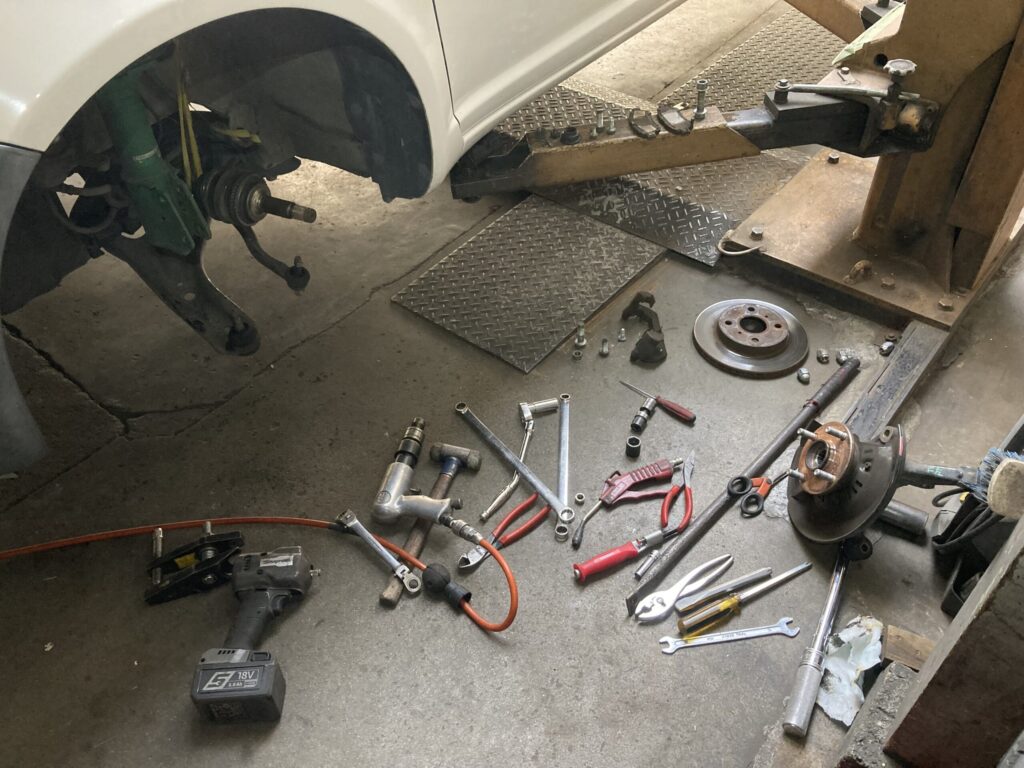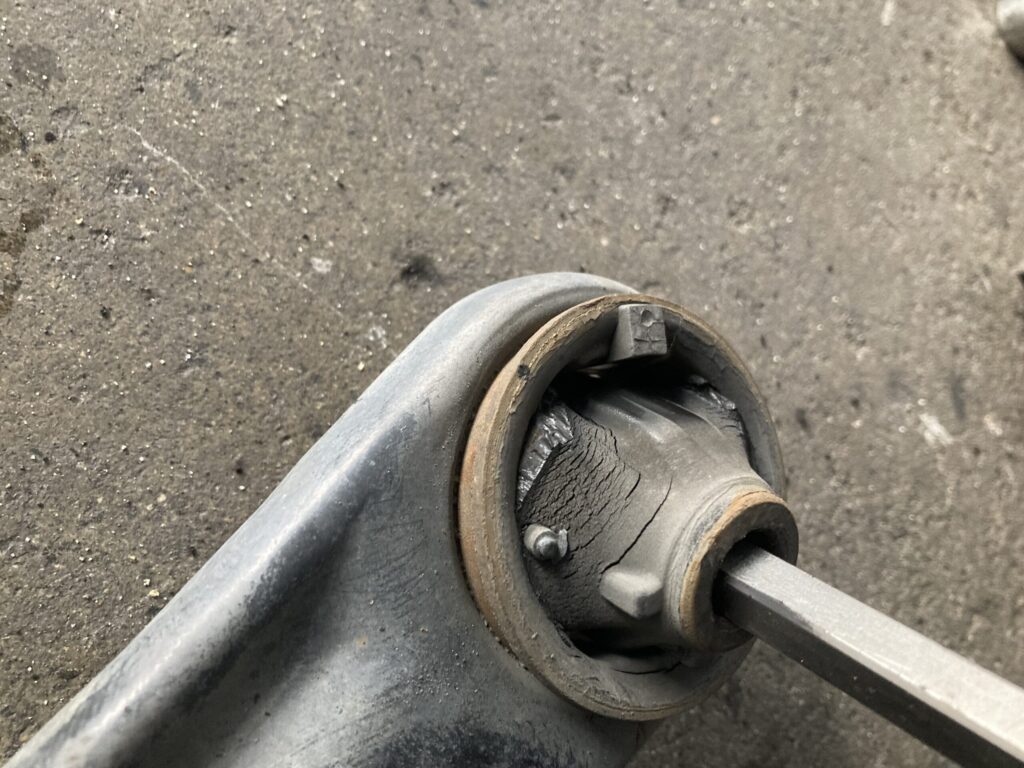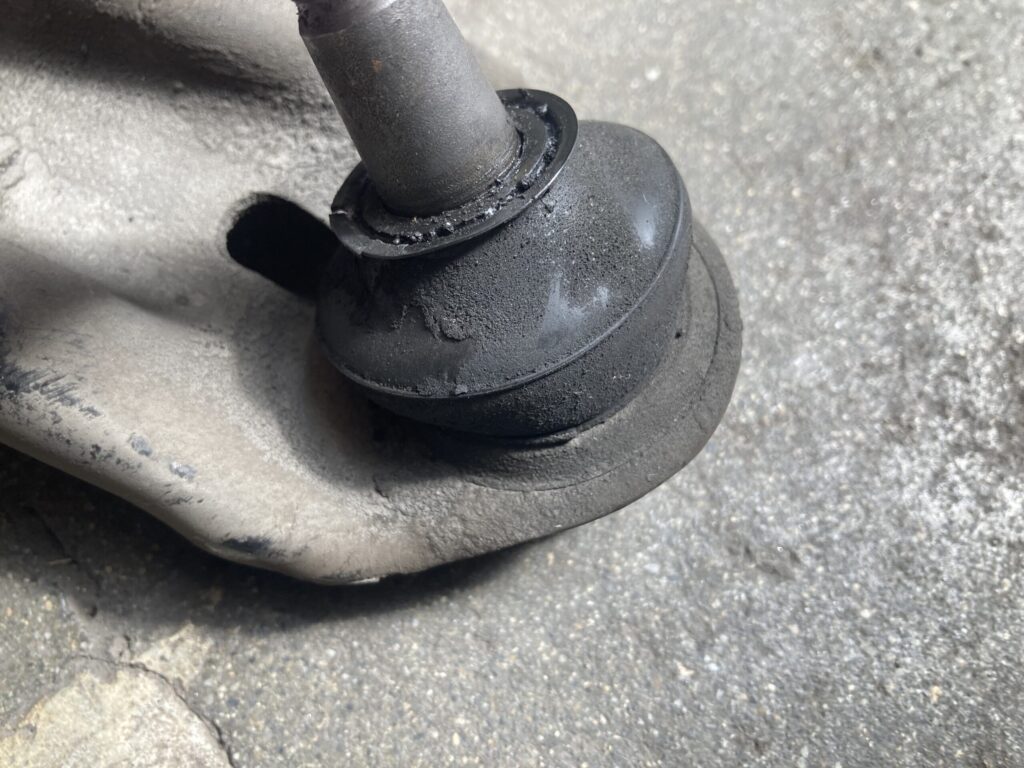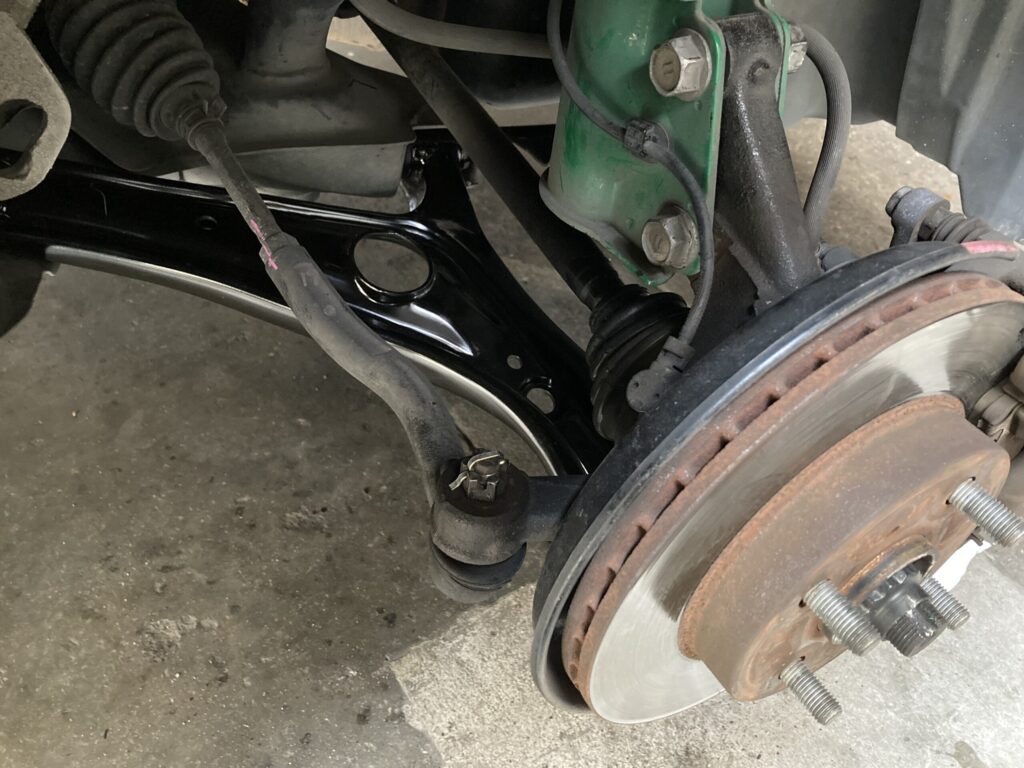Suspension arm bushings, which have a structure similar to the engine mount insulators I replaced the other day.
Suspension arms are typically attached to the body through rubber bushings, which not only buffer inputs from the road surface but also prevent steering and suspension movements from becoming overly sensitive.
On race tracks or other special road environments where vehicles compete with high-grip tires, the force transmitted from the road surface to the suspension arms is large, resulting in significant bushing deflection. In these cases, the ambiguity in suspension arm movement is avoided by replacing bushings with more precise operating parts such as ball joints.
However, ordinary roads are completely different from race tracks, with moderate tire grip (although in recent years, vehicle performance has improved so much that cars rarely break their posture) and uneven surfaces. A peaky specification where all pivot points are ball joint-type would be very difficult to operate normally (some ball joints are used in production vehicles). Some degree of “deflection” is important and makes driving easier.
But rubber deteriorates. Even in Toyota vehicles that use excellent materials, when the mileage approaches 400,000 km, the suspension operation becomes far from normal, and the appropriate “deflection” of the bushings gradually increases in ambiguity, making acceleration, deceleration, and steering feel uncomfortable. Even after regular replacement of shock absorbers, there wasn’t the same level of satisfaction as before, so we decided to inspect and maintain the entire suspension system.
2003 Model UA-SCP10 1SZ-FE 5MT Mileage: 373,000 km
First, we detach the front suspension arms. In Toyota’s case, removing the hub knuckle through which the drive shaft passes makes the work smoother.
The bushing at the rear end of the suspension arm had large cracks like this. However, despite being 22 years old and having driven 373,000 km, it gives the impression that it hasn’t completely broken yet.
The front bushing only shows slight cracks around the center boss.
What surprised me most was that there were absolutely no cracks in the dust boot of the ball joint (the pivot point at the lower part of the hub knuckle is typically a ball joint type). With other manufacturers, cracks or fissures appear after about 10 years. I’m completely impressed by Toyota’s high quality.
Unfortunately, since bushings alone aren’t supplied, we had to replace the expensive suspension arm assembly, but it goes without saying that the effect was worth more than the cost.
Next time, I’d like to replace the rear suspension arm bushings, which requires special tools.
↓ For this Vitz, the choices for consumable shock absorbers are gradually decreasing, and we’re currently testing TEIN (with damping force adjustment).
|
|





![[商品価格に関しましては、リンクが作成された時点と現時点で情報が変更されている場合がございます。] [商品価格に関しましては、リンクが作成された時点と現時点で情報が変更されている場合がございます。]](https://hbb.afl.rakuten.co.jp/hgb/1b7c2bff.8c75e128.1b7c2c00.ebb411d1/?me_id=1377663&item_id=11940735&pc=https%3A%2F%2Fthumbnail.image.rakuten.co.jp%2F%400_gold%2Fark-tire%2Fitem%2Fimg%2FTEIN_EnduraPro_PLUS_KIT.jpg%3F_ex%3D128x128&s=128x128&t=picttext)
Leave a Reply